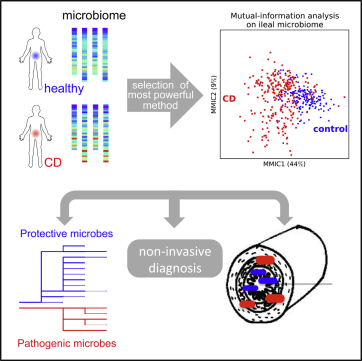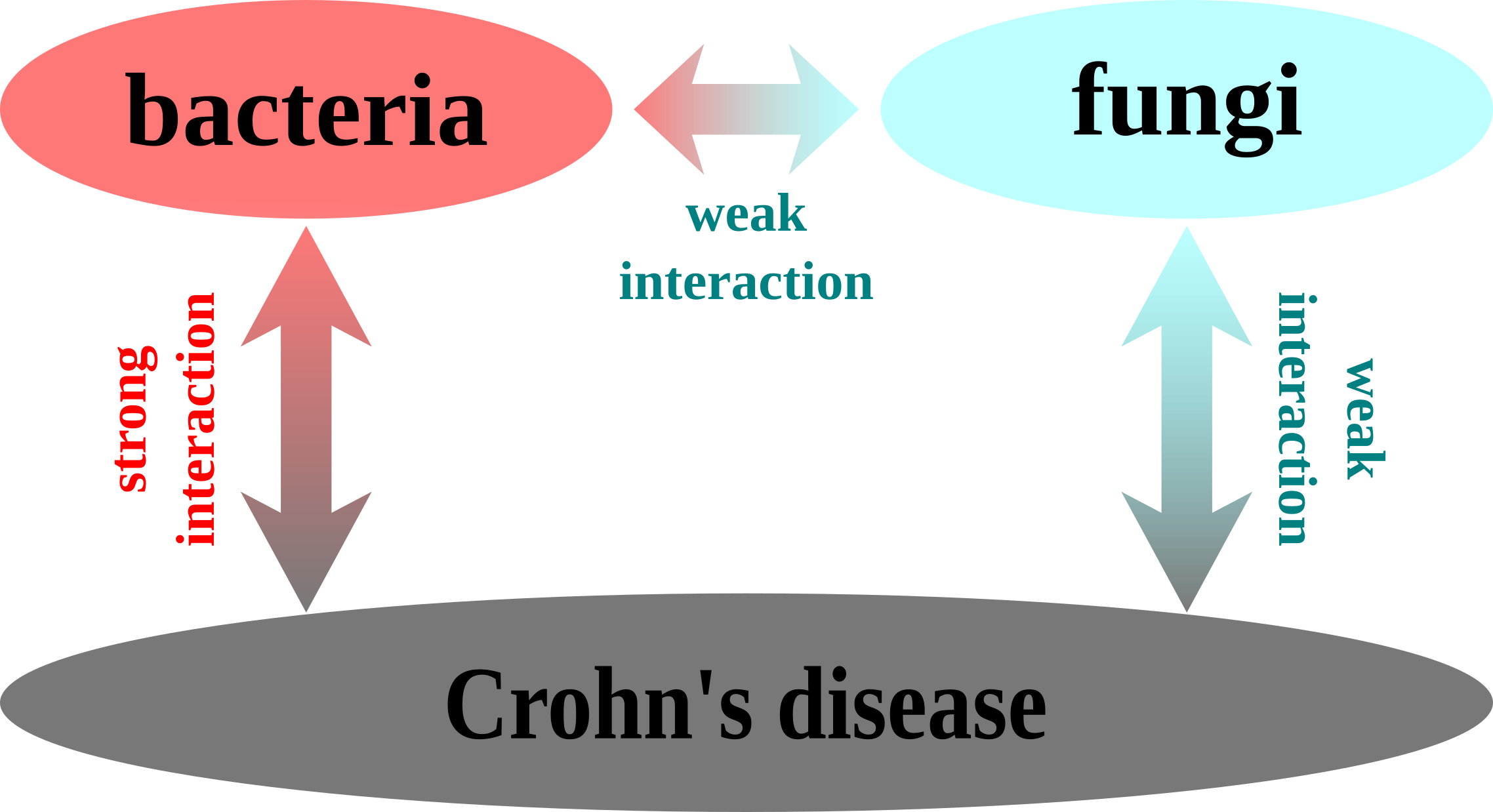Soft Matter Physics
Melting of colloidal crystals
Crystal melting is affected by many factors such as defects, surfaces, dimensionality, lattice structure and particle interaction, and thus exhibits rich phenomenology. It is usually a first-order phase transition which currently lacks a fundamental theory. Despite numerous studies over the past century, melting remains poorly understood at the microscopic level. Micrometer-sized colloidal particles can be viewed as "big atoms" which can assemble into various phases. Their thermal motions can be directly imaged and tracked using optical microscopy. Hence, colloids are powerful model systems for studying phase transitions. Recent progress made in fabricating tunable micrometer sized colloidal particles has enabled the direct visualization of crystal melting with single-particle dynamics. The observations have greatly expanded our understanding of melting kinetics, such as:
- homogeneous melting can be described accurately by classical nucleation theory at weak superheating, however, strong deviations are also observed under strong superheating, mainly due to the coalescence of nuclei;
- liquid nuclei are triggered by local particle-exchange loops rather than any defects.
- Imaging the homogeneous nucleation during the melting of superheated colloidal crystals, Science 338, 87 (2012) doi: 10.1126/science.1224763
- Direct observation of liquid nucleus growth in homogeneous melting of colloidal crystals, Nature Communications 6, 6942 (2015) doi: 10.1038/ncomms7942
- Modes of surface premelting in attractive colloidal crystals. Nature, 531, 485-488 (2016).doi: 10.1038/nature16987
- Melting of colloidal crystals. Advanced Functional Materials, 26, 8903-8919 (2016).doi: 10.1002/adfm.201603077
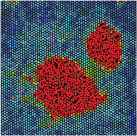
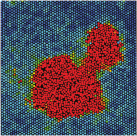
When two nuclei grew and the distance between them was reduced, a liquid channel developed and facilitated their coalescence.
Copied from Nature Communications 6, 6942 (2015)
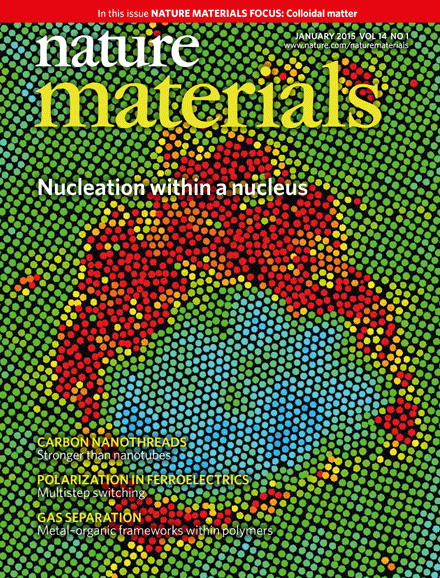
Two-step nucleation mechanism in solid-solid phase transitions
Nature Materials 14, 101-108 (2015)
The microscopic kinetics of ubiquitous solid–solid phase transitions remain poorly understood. By using single-particle-resolution video microscopy of colloidal films of diameter-tunable microspheres, we found that transitions between square and triangular lattices occur via a two-step diffusive nucleation pathway involving liquid nuclei. The nucleation pathway is favored over the direct one-step nucleation because the energy of the solid/liquid interface is lower than that between solid phases. Based on the theoretical understanding of this pathway, our findings suggest that an intermediate liquid should exist in the nucleation processes of solid–solid transitions of most metals and alloys, and provide guidance for better control of the kinetics of the transition and for future refinements of solid–solid transition theory.
